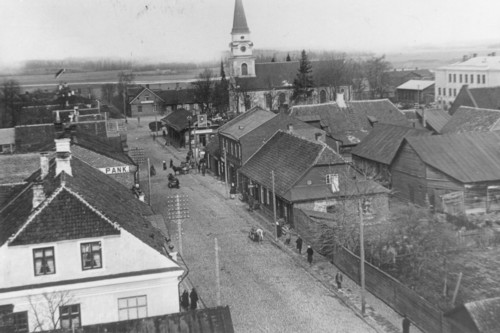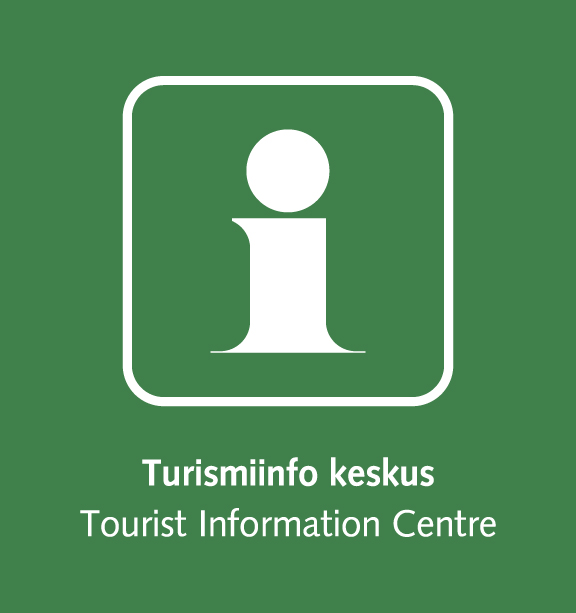History and culture
 The oldest archaeological find from the territory of the present town of Võru is an odd find, a woman's skull from the Mesolithic period of the Stone Age (about 4000 BC), thus about 6000 years old, the oldest skull ever found in Estonia. The permanent exhibition of Võrumaa Museum contains a bust modelled after the skull in the Academy of Sciences of Lithuania. The places where human habitation started in Võrumaa are situated on the banks of the Võhandu River: Kääpa which was inhabited 5000 years ago, Villa, inhabited 4500 years ago and Tamula settlement which was inhabited from the last quarter of the 3rd century till the first quarter of the 2nd century BC. The place was inhabited for 500 years 4250 years ago. In 1943 the earliest Estonian buried find of interesting amber pendants and things made of bone was unearthed on the spot of Tamula settlement. When you start walking from the centre of the town it takes you half an hour to walk through the park and across a beautiful suspension bridge before you reach the ancient Tamula settlement.
The oldest archaeological find from the territory of the present town of Võru is an odd find, a woman's skull from the Mesolithic period of the Stone Age (about 4000 BC), thus about 6000 years old, the oldest skull ever found in Estonia. The permanent exhibition of Võrumaa Museum contains a bust modelled after the skull in the Academy of Sciences of Lithuania. The places where human habitation started in Võrumaa are situated on the banks of the Võhandu River: Kääpa which was inhabited 5000 years ago, Villa, inhabited 4500 years ago and Tamula settlement which was inhabited from the last quarter of the 3rd century till the first quarter of the 2nd century BC. The place was inhabited for 500 years 4250 years ago. In 1943 the earliest Estonian buried find of interesting amber pendants and things made of bone was unearthed on the spot of Tamula settlement. When you start walking from the centre of the town it takes you half an hour to walk through the park and across a beautiful suspension bridge before you reach the ancient Tamula settlement. The earliest reference to Kirumpää Stronghold which was erected to protect the eastern border of Tartu bishopric dates from 1322.  A big settlement of merchants and craftsmen, the biggest among similar settlements, sprang up around the hill fort built of stone. Võru is located about a kilometer south of the ruins of this famous stronghold. Kirumpää was destroyed in 1656 in a war between Russia and Sweden. It happened 128 years before Võru was founded. Kirumpää had constantly been a battleground, the stronghold and the lands belonging to it had changed hands several times being owned by Germany, Russia and Sweden. The first reference to the neighbouring property of the stronghold, Võru Manor Veromoiza dates from the times of Polish rule, 1590. After the Great Northern War when the so-called Russian time started, Empress Jelizaveta Petrovna presented a part of the stronghold area to Count Bestuev-Rjumin. The lands of Kirumpää were sold and bought and when they belonged to the Müller family, one of their daughters also aquired Võru Manor. Müller sold the manor to von Mengden from whom Võru Manor was bought in order to create the centre of the newly established county.
A big settlement of merchants and craftsmen, the biggest among similar settlements, sprang up around the hill fort built of stone. Võru is located about a kilometer south of the ruins of this famous stronghold. Kirumpää was destroyed in 1656 in a war between Russia and Sweden. It happened 128 years before Võru was founded. Kirumpää had constantly been a battleground, the stronghold and the lands belonging to it had changed hands several times being owned by Germany, Russia and Sweden. The first reference to the neighbouring property of the stronghold, Võru Manor Veromoiza dates from the times of Polish rule, 1590. After the Great Northern War when the so-called Russian time started, Empress Jelizaveta Petrovna presented a part of the stronghold area to Count Bestuev-Rjumin. The lands of Kirumpää were sold and bought and when they belonged to the Müller family, one of their daughters also aquired Võru Manor. Müller sold the manor to von Mengden from whom Võru Manor was bought in order to create the centre of the newly established county.
 A big settlement of merchants and craftsmen, the biggest among similar settlements, sprang up around the hill fort built of stone. Võru is located about a kilometer south of the ruins of this famous stronghold. Kirumpää was destroyed in 1656 in a war between Russia and Sweden. It happened 128 years before Võru was founded. Kirumpää had constantly been a battleground, the stronghold and the lands belonging to it had changed hands several times being owned by Germany, Russia and Sweden. The first reference to the neighbouring property of the stronghold, Võru Manor Veromoiza dates from the times of Polish rule, 1590. After the Great Northern War when the so-called Russian time started, Empress Jelizaveta Petrovna presented a part of the stronghold area to Count Bestuev-Rjumin. The lands of Kirumpää were sold and bought and when they belonged to the Müller family, one of their daughters also aquired Võru Manor. Müller sold the manor to von Mengden from whom Võru Manor was bought in order to create the centre of the newly established county.
A big settlement of merchants and craftsmen, the biggest among similar settlements, sprang up around the hill fort built of stone. Võru is located about a kilometer south of the ruins of this famous stronghold. Kirumpää was destroyed in 1656 in a war between Russia and Sweden. It happened 128 years before Võru was founded. Kirumpää had constantly been a battleground, the stronghold and the lands belonging to it had changed hands several times being owned by Germany, Russia and Sweden. The first reference to the neighbouring property of the stronghold, Võru Manor Veromoiza dates from the times of Polish rule, 1590. After the Great Northern War when the so-called Russian time started, Empress Jelizaveta Petrovna presented a part of the stronghold area to Count Bestuev-Rjumin. The lands of Kirumpää were sold and bought and when they belonged to the Müller family, one of their daughters also aquired Võru Manor. Müller sold the manor to von Mengden from whom Võru Manor was bought in order to create the centre of the newly established county. This is the beginning of the town of Võru because neither the ancient Tamula settlement nor Kirumpää stronghold can be considered a predecessor of Võru. In 1783 a new county was formed by order of Empress Catherine II from the southern and south-eastern part of Tartu County, the
centre of which was to be located in Old Koiola State Manor (Kirumpäh-Koiküll). After some time
Catherine II gave George von Browne, Governor General of Riga permission to buy Võru Manor in order to set up a town on its territory. The main building of the manor, though rebuilt is still
standing. 21 August 1784 when the Governor General issued a decree announcing that the new town which was to be called Võru was to be located on the lands of Võru Manor is considered to be the official birthday of the town.
Võru is a town founded by order. In 1785 the plan of the town which envisaged a regular network of streets with right-angled intersections was approved. This historical network of streets has preserved, among other buildings one-storeyed buildings prevail. What characterizes the town and adds to its value is the unique network of streets and architecturally interesting wooden buildings. Lutheran (1793) and Orthodox (1804) Churches both dedicated to Catherine II also belong to the early years of the town.
For 215 years Võru has been the centre of local administration, culture, sports, services and entrepreneurship. In the early years the driving force was the citizens of German descent. Estonians started taking power in 1902 when the first Estonians Adam Tiganik and Johan Lauri were elected to the Municipal Council.
The most famous inhabitant of Võru through the years has been Fr.R.Kreutzwald who lived and worked here as a municipal medical practitioner in the years 1833-1877. In Võru he also compiled the Estonian national epic "Kalevipoeg" In the houses that once belonged to Kreutzwald there is his memorial museum today. In the old town park on the bank of Lake Tamula there is an imposing statue of Kreutzwald (created by A.Adamson).
Võru has also been a famous educational town. In 1830-40s H.Krümmer's private boarding school and Genge's higher school for girls were well-known. In the second half of the 19th century there were 7 schools with 31 teachers and 317 students while there were 2697 inhabitants in Võru in 1884.

In 1914 Women's Handicrafts School and in 1925 Võru Industrial School were opened. In the years 1921-1930 Võru Teachers' Seminary where Johannes Käis was one of the teachers worked here.
Võru Voluntary Firefighting Society was founded in 1867, Choral and Theatrical Society in 1881. From 1927 to 1948 a professional theatre worked in Võru. People of Võru have always practised singing, dancing and playing musical instruments. In 1926 there were 9 libraries, 36 societies and associations in Võru and there were also two newspapers published.
In the 19th century and first decades of the 20th century economy developed in Võru as in any small town where there were few opportunities and needs were not big either. In 1889 Võru got rail links to Riga and Pskov. In 1899 the first telephone call to Tartu was made, Võru got electricity in 1915. In 1926 there were 31 industrial enterprises, 79 artisans' workshops, 5 banks, 4 guesthouses and restaurants, 3 saunas, 148 commercial enterprises.

There were 6600 inhabitants in Võru in 1940. In the Soviet period several big enterprises were founded in Võru: a furniture factory, gas analyser plant, dairy, building companies, a footwear factory, and others. The population of Võru reached 18,000. Several new residential areas of big concrete apartment blocks (in Vilja Street and Luha Street areas) were built. Liitva and Kubja became areas of private houses. The territory of the town grew.
The breakdown of Soviet planned economy resulted in serious economic and social problems. At the same time the new economic order based on market relations in free Estonia offered Võru new contemporary opportunities to develop in every field of life. Beside old enterprises that have been reorganizing to meet the conditions of market economy several successful new firms, service enterprises, shops and catering enterprises have sprung up.
Võru retains its cultural heritage and good traditions but it is also open to everything new and contemporary and ready to develop.

